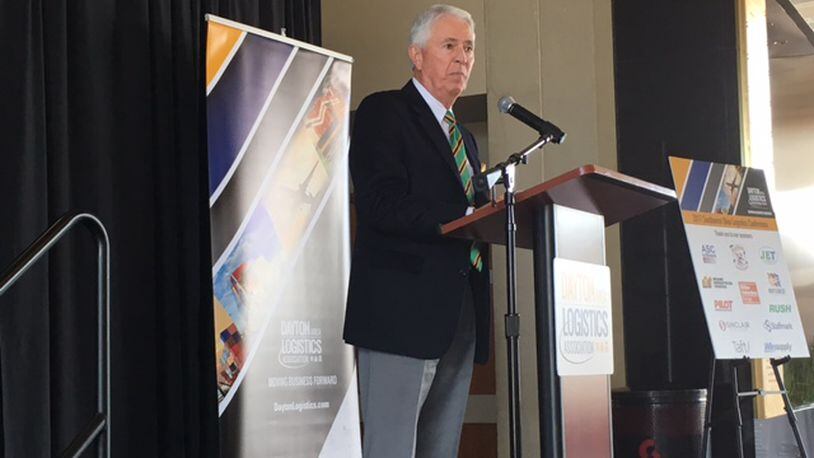RELATED: 3 questions with … Caterpillar's Brian Purcell
Autonomous technology can do much more than automatically operate a vehicle. It can warn drivers and vehicles about other vehicles approaching congested intersections at dangerous speeds, Wray said. And it can help peg variable speed limits to a road’s busiest and least busy times.
The technology can also help the Caterpillar Clayton distribution center — one of Caterpillar’s largest logistics facilities — one day operate more efficiently, said Vasiliy Faustov, supply chain engineer and analyst for Caterpillar Logistics Services, Inc.
RELATED: Q&A: Dayton a good Midwest option for companies, consultant says
Both Wray and Faustov were talking about technology that’s largely in place today, but requires further testing, development and refining.
In November, a self-driving semi truck took to U.S. 33 from Dublin to East Liberty as part of an ODOT technology showcase.
RELATED: Dangerous highways: Truck-related crashes increase in Ohio
Ohio will spend about $2 billion on highway infrastructure each year over the next two years in part as an investment in the new technology, Wray said. And by the time Gov. John Kasich ends his second and final term in January 2019, the state will have spent $16 billion in all on highways, he added.
That will include “smart mobility corridors” along Interstate 270 around Columbus and on I-90 from Cleveland to the Pennsylvania border, he said.
That boils down to cameras, sensors, wireless fidelity and fiber-optic cable that will let roads communicate with vehicles and drivers and, eventually, allow vehicles to communicate with each other, he said.
There is no definitive deadline for when the entire state will have such autonomous technology in place. But Wray estimated it could be perhaps 20 years.
“When it happens, it’ll happen fast,” he said.
He said the state is looking for projects in the Cincinnati-Dayton area.
At heavy equipment manufacturer Caterpillar Inc. — which has a 1.5 million-square-foot distribution center off I-70 in Clayton — the company is testing autonomous vehicles to move parts in a Spokane, Wash. warehouse, Faustov said.
The idea is to help save employees steps in a busy distribution environment.
“If it works, we’ll replicate it on a bigger scale,” Faustov said when asked if the technology could make its way to Clayton.
About the Author
